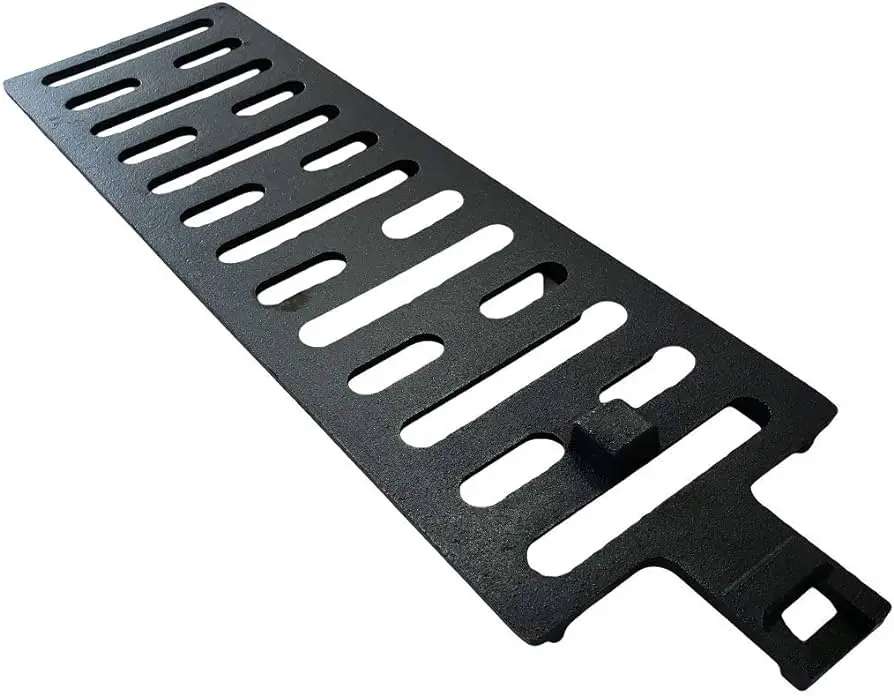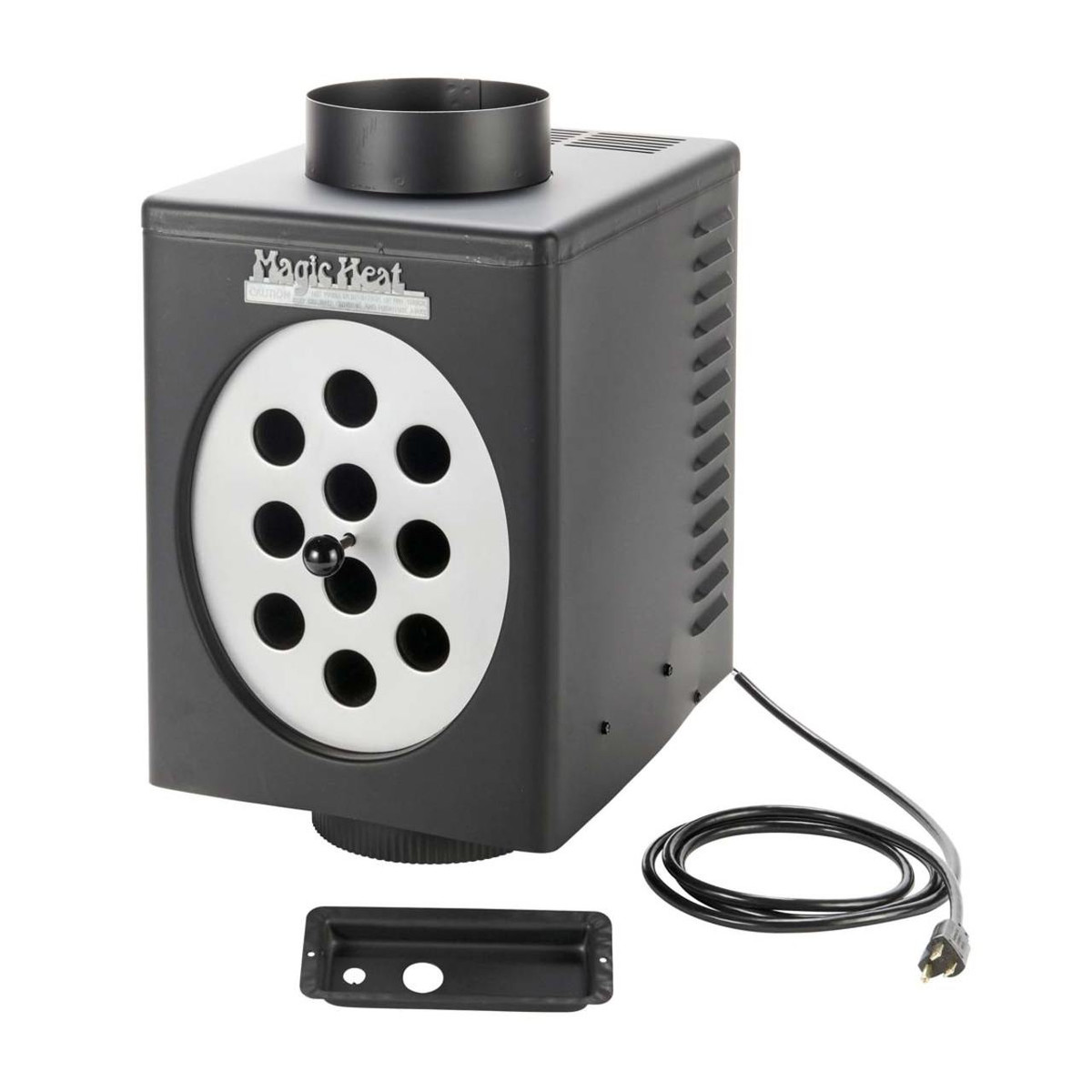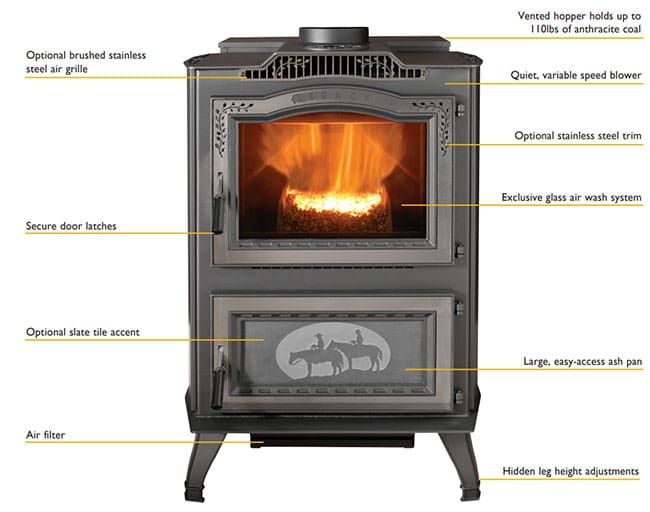Burning coal in a wood stove requires a grate and clear ashpan to facilitate airflow. It’s important to avoid burning charcoal, which is toxic and releases carbon monoxide indoors; anthracite coal is a preferred option for its long burn time and consistent heat output.
When it comes to heating your home with a wood stove, the option to burn coal can provide longer-lasting warmth. With proper precautions, such as ensuring airflow through a clear grate and ashpan, coal can be safely used in wood stoves.
Understanding the differences between coal and charcoal is essential, as burning charcoal indoors can release harmful gases. Anthracite coal emerges as a reliable fuel source, offering efficient heat and extended burning periods. By following safety guidelines and opting for the right fuel, you can effectively utilize coal in your wood stove for optimal heating.

Benefits Of Burning Coal In A Wood Stove
Certain |wood stoves have the capacity to burn coal,| offering a range of benefits that can make it a viable heating option. From longer burn times to consistent heat output, here are the advantages that come with burning coal in a wood stove:
Longer Burn Time
Burning coal in a wood stove results in a prolonged burning duration compared to wood. This means less frequent refueling and extended warmth throughout the day and night.
Consistent Heat
Unlike wood, coal provides consistent and steady heat output over a longer period. This ensures a constant temperature in your living space, reducing the need to adjust the stove frequently.

Credit: www.amazon.com
How To Burn Coal In A Wood Stove
Burning coal in a wood stove can be an efficient way to heat your home during the colder months. By following the right steps, you can ensure a steady and long-lasting burn that keeps your space warm and cozy. Below are the key considerations for successfully burning coal in a wood stove.
Preparing The Stove
- Ensure the stove has a grate for proper airflow.
- Keep the grate and ashpan clear of ash to maintain airflow.
- Close any top air inlets and control the stove using the lower air controller.
Adding And Maintaining Coal
- Start by adding a small amount of coal to the stove.
- Gradually add more coal as needed to maintain a steady burn.
- Monitor the coal levels regularly to avoid overloading the stove.
Avoiding Wood And Coal Together
Avoid burning wood and coal together as it can damage your stove and chimney. Stick to one fuel source at a time to ensure safe and efficient heating.
When burning coal in a wood stove, choose high-quality anthracite coal for optimal performance. This type of coal offers higher energy content, a longer burn time, and consistent heat output, making it a reliable choice for heating your home.
“` I hope this helps! Let me know if you need any more assistance.Choosing The Best Coal For A Wood Stove
When it comes to choosing the best coal for a wood stove, it’s essential to consider the type of coal that will work efficiently and safely in your stove. Selecting the appropriate coal for your wood stove can significantly impact its performance, burn time, and heat output.
Anthracite Coal
Anthracite coal is known for its high carbon content and low impurities, making it a popular choice for burning in wood stoves. It produces a consistent and long-lasting heat, making it ideal for heating your home efficiently. Additionally, anthracite coal produces less smoke and ash compared to other types of coal, resulting in minimal maintenance for your wood stove.
Comparing Coal And Wood As Fuel Sources
When comparing coal and wood as fuel sources for wood stoves, it’s important to note that coal generally provides a longer burn time and more consistent heat output than wood. While wood may be more readily available and cost-effective in some regions, anthracite coal offers a higher energy content, making it a reliable and efficient fuel source for heating your home.

Credit: www.fireplacedoorsonline.com
Risks And Considerations
Burning coal in a wood stove may seem like a convenient option for heating your home, especially if you have coal readily available. However, it is essential to understand the risks and considerations associated with this practice. In this section, we will explore the dangers of burning coal in a wood stove and the impact it can have on the durability of your stove.
Dangers Of Burning Coal In A Wood Stove
Burning coal in a wood stove poses several hazards that you should be aware of. The first and most significant risk is the release of carbon monoxide gas. Unlike wood, coal produces higher levels of carbon monoxide when burned, which can be extremely harmful if inhaled. This toxic gas is odorless and can quickly lead to carbon monoxide poisoning, resulting in severe health complications or even death.
Additionally, burning coal in a wood stove can cause excessive heat buildup. Coal burns at higher temperatures than wood, and the intense heat can damage the internal components of your stove, including the firebricks and the stove’s outer casing. This heat stress can lead to cracks, warping, and other structural issues, compromising the stove’s overall functionality and safety.
Impact On Stove Durability
The practice of burning coal in a wood stove can significantly impact the longevity and durability of your stove. As mentioned earlier, the higher temperatures produced by burning coal can result in damage to the stove’s internal parts. The intense heat can cause the firebricks to crack or crumble, reducing their ability to retain heat efficiently.
In addition to damaging the firebricks, burning coal can also lead to the degradation of the stove’s outer casing. The constant exposure to high temperatures can cause warping or discoloration of the stove’s external surfaces, affecting its aesthetic appeal and overall durability.
To summarize, here are the key risks and considerations of burning coal in a wood stove:
- Release of toxic carbon monoxide gas
- Potential for carbon monoxide poisoning
- Excessive heat buildup and risk of structural damage
- Cracking or crumbling of firebricks
- Warping or discoloration of the stove’s outer casing
Considering these risks and the potential impact on the longevity of your wood stove, it is essential to use coal only in stoves specifically designed for coal burning. Using the right type of stove ensures proper ventilation, temperature control, and safety measures to minimize the dangers associated with burning coal.
Alternatives And Conversions
Burning coal in a wood stove may not be the most eco-friendly or efficient choice. Fortunately, there are alternatives available that can provide a cleaner and more sustainable option for heating your home.
1. Wood Pellets:
Wood pellets are made from compressed sawdust and other wood waste materials. They are a renewable and carbon-neutral fuel source. Wood pellet stoves are designed to burn these pellets efficiently, producing less smoke and ash compared to burning coal.
2. Biomass Briquettes:
Biomass briquettes are made from agricultural and forestry waste, such as rice husks, straw, and sawdust. They are a sustainable fuel option and can be used in specially designed stoves or converted wood stoves.
3. Electric Or Gas Stove:
An electric or gas stove is another alternative to burning coal. These stoves provide clean and efficient heat without the need for burning any fuel. They are easy to use and require minimal maintenance.
If you already have a wood stove and are considering switching to coal for its longer burn time and consistent heat, it is not recommended to directly burn coal in a wood-burning stove. However, it is possible to convert a wood stove to burn coal with a few modifications:
1. Grate Installation:
The first step in converting a wood stove to burn coal is to install a suitable grate. A coal grate is designed to allow proper airflow and efficient combustion of coal. It prevents the coal from smothering and helps in the complete burning of fuel.
2. Lower Air Control Adjustment:
To optimize the burning of coal, the lower air control in the stove needs to be adjusted. This control regulates the primary air supply, allowing you to achieve the desired coal-burning temperature.
3. Ash Pan Maintenance:
Regular maintenance of the ash pan is essential when burning coal. Keep the ash pan clear of excess ash to ensure proper airflow and prevent any obstructions.
4. Separate Wood And Coal Burning:
It’s important to note that wood and coal should not be burned together as this can damage the stove and chimney. Use separate compartments or designated areas for burning wood and coal.
While converting a wood stove to burn coal is possible, it’s important to consult a professional or stove manufacturer to ensure your stove is suitable and safe for coal burning.

Credit: legacystoves.com
Frequently Asked Questions For Burning Coal In A Wood Stove
What Happens If You Burn Charcoal In A Wood Stove?
Burning charcoal in a wood stove is unsafe and releases toxic carbon monoxide. It should only be used in outdoor BBQs.
How Do You Burn Coal In A Wood Stove?
To burn coal in a wood stove: Ensure it has a grate and keep it clear for air flow. Control airflow with the lower vent. Avoid burning wood and coal together.
What Is The Best Coal To Burn In A Wood Stove?
The best coal to burn in a wood stove is Anthracite Coal due to its higher energy content, longer burn time, and consistent heat.
Can You Convert A Wood Stove To Burn Coal?
Yes, you can convert a wood stove to burn coal. It’s possible to modify the grate and airflow to accommodate coal burning.
Can You Burn Coal In A Wood Stove?
No, burning coal in a wood stove is not recommended as it can be dangerous and cause damage to the stove.
Conclusion
Burning coal in a wood stove can be a viable heating option. It’s important to follow safety precautions and use the appropriate type of coal. By understanding the process and making sure to maintain proper airflow, homeowners can enjoy the benefits of longer burn times and consistent heat.